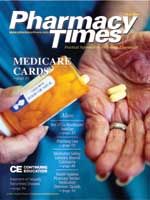Publication
Article
Pharmacy Times
Are You Ready?
Next month your elderly patients will be able to use their new "drug discount card." Some have suggested that patients who needed drugs but could not afford them will now start getting their medications. The result, over the next few years, will be an increase in the number of prescriptions being filled in pharmacies. How will pharmacists handle this increased volume, provide medication-therapy management services in 2006, counsel patients on new prescriptions, deal with more administrative hassles, etc?
Automation may be an important tool. At a recent pharmacy convention, I saw a number of examples of robotic dispensing systems. The sales personnel were enthusiastic about their product's being able to help the pharmacist handle more work. Of course, what would you expect? When I have discussed automation with pharmacists who are using robots, however, I have received enthusiastic responses about the benefit from them as well. Of course, I also have heard the "war stories" about the systems that were going to save time but did not.
Automation may not work for every pharmacy, but it does work for many. Do your homework, but a robotic dispensing system may be in your future. The systems I saw offer exciting opportunities to return pharmacists to spending more time with patients.
Finally, I would like to encourage you to share your stories with me ([email protected]) about how you have handled the many questions you have received from your customers about drug discount cards. By now, you or your employer has determined how you plan to position your pharmacists to handle the questions. You have decided which cards make professional sense, and your pharmacy has determined which networks to join. How has it worked out?
I believe that what happens in May will go a long way in determining the success of the 2003 Medicare Prescription Drug, Improvement and Modernization Act and pharmacists' future. Share your experiences with me, and I will share your stories with our readers.

Newsletter
Stay informed on drug updates, treatment guidelines, and pharmacy practice trends—subscribe to Pharmacy Times for weekly clinical insights.






